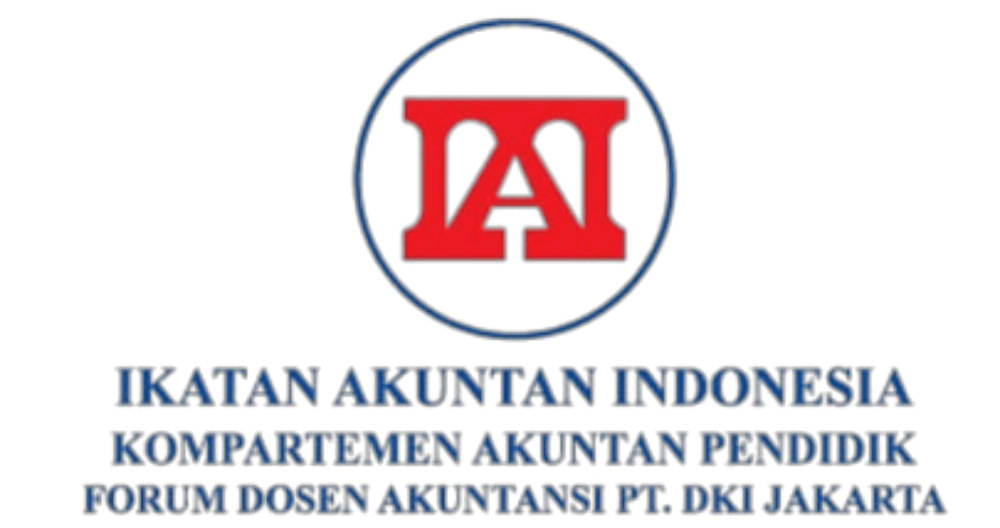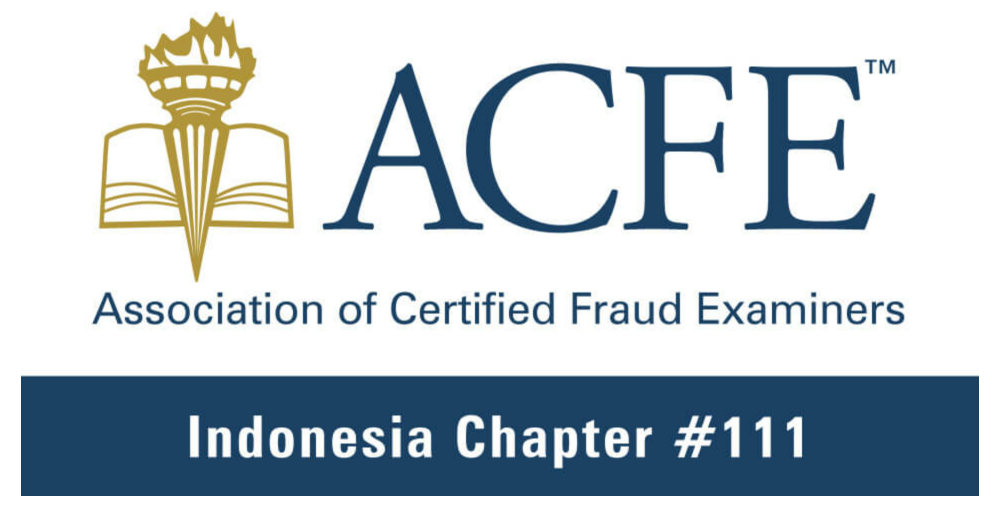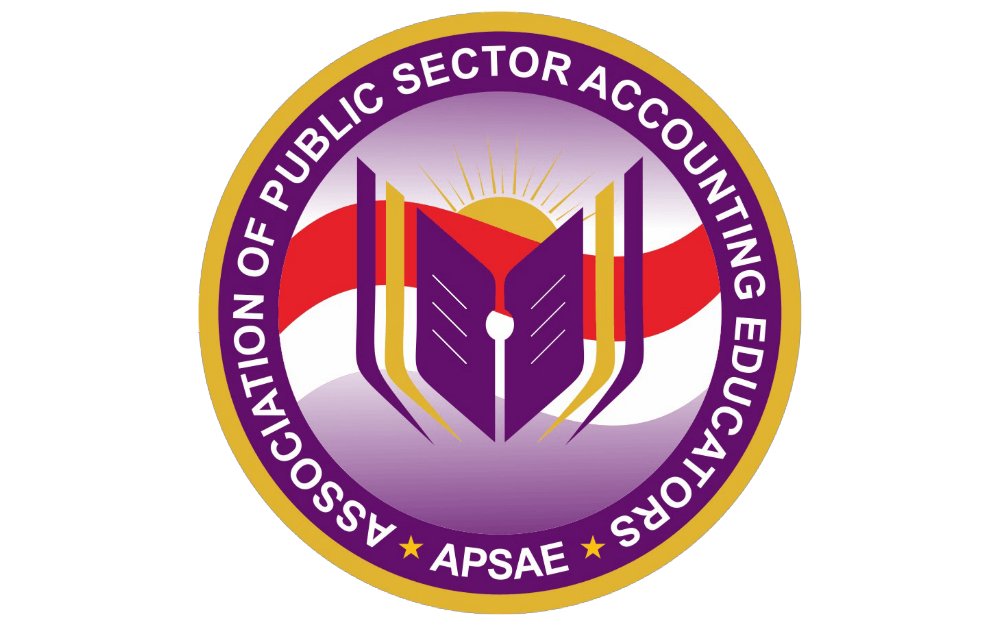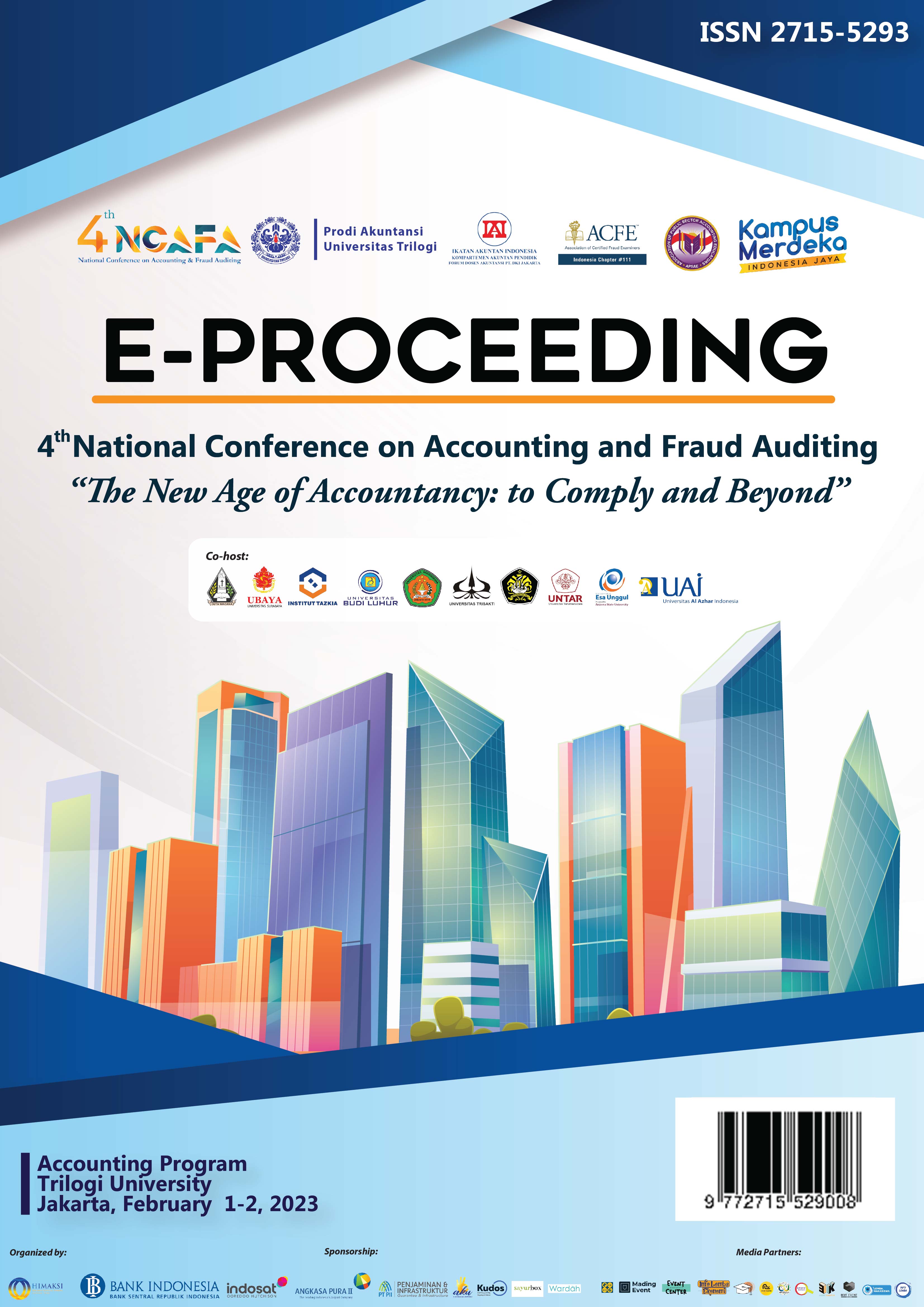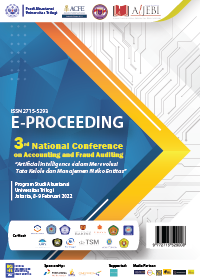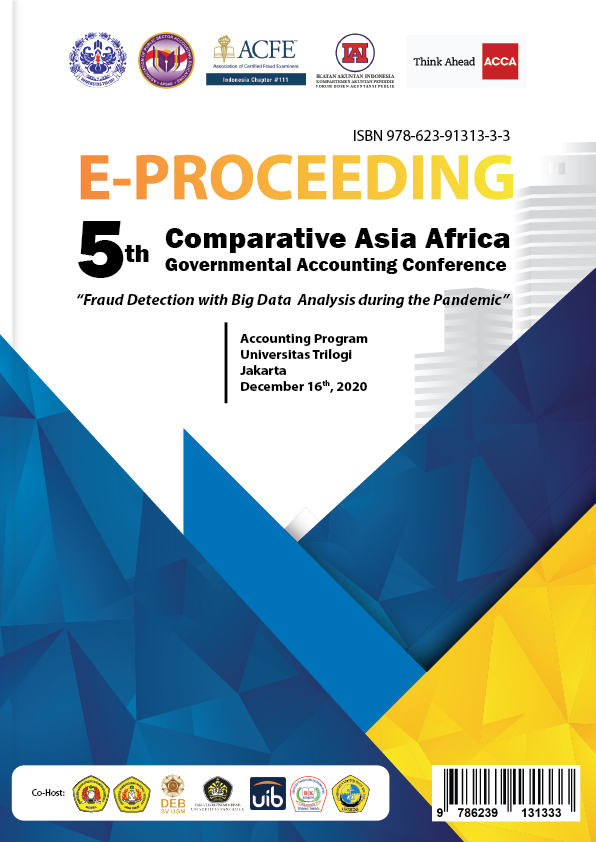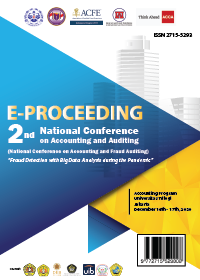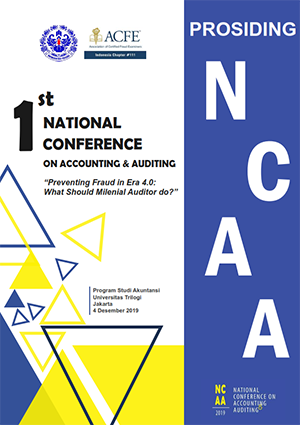OPTIMIZING CORPORATE EXCELLENCE: ANALISIS KINERJA RAMAYANA MELALUI PENDEKATAN BALANCE SCORECARD
Abstract
The purpose of this research is to analyze the performance of the company, namely PT. Ramayana Lestari Sentosa Tbk in achieving maximum goals, using four Balanced Scorecard (BSC) perspectives. The Balanced Scorecard is a performance metric used to identify, improve, and control various business functions and the resulting results. This concept was first introduced in 1992 by David Norton and Robert Kaplan. The research method uses qualitative methods with research data obtained through interviews and literature studies based on previous research. The results of the research show that using the BSC performance measurement method, in general from a financial perspective, customer perspective, and learning and growth perspective, shows good results, as can be seen from the achievement of several targets on key performance indicators (KPI), where there was an increase in performance in running, both from financial, customer, business process and employee aspects.
Keywords: Balance Scorecard_1; Company Performance_2; Optimization_3; Retail Fashion_4Full Text:
PDFReferences
Imawanty, I., & Hidayat, R. (2023). BALANCED SCORECARD (BSC) SEBAGAI STRATEGI: STUDI KASUS IMPLEMENTASI BSC PADA ORGANISASI PENDIDIKAN. Neraca: Jurnal Ekonomi, Manajemen dan Akuntansi, 1(4), 370-380.
Jurnal-Id, & Editorial, M. J. (2023). Balanced Scorecard: Definisi, Konsep dan Perspektifnya. Retrieved from https://www.jurnal.id/id/blog/balanced-scorecard/.
Kaplan, R. S., & Norton, D. P. (1996). Using the balanced scorecard as a strategic management system.
Kaplan, R. S., & Norton, D. P. (1996). The balanced scorecard: translating strategy into action. Language, 11(322p), 23cm.
Kesek, F. N., Sabijono, H., & Tirayoh, V. Z. (2020). Analisis Kinerja Perusahaan Dengan Menggunakan Metode Balanced Scorecard Pada Pt. Nenggapratama Internusantara. Jurnal EMBA: Jurnal Riset Ekonomi, Manajemen, Bisnis Dan Akuntansi, 8(4).
Mukhtari, Z. (2022). PROGRAM DESA BERDIKARI DALAM MEWUJUDKAN KEMANDIRIAN PANGAN BAGI MASYARAKAT DESA TANJUNGPURA (Studi Pada Masyarakat di Desa Tanjungpura Kecamatan Rajapolah Kabupaten Tasikmalaya) (Doctoral dissertation, Universitas Siliwangi).
Mukoffi, A. (2011). Penerapan Balanced Scorecard Sebagai Penilaian Kinerja Pada PT Alp Petro Industry Gempol-Pasuruan. JAMSWAP: Jurnal Akuntansi Dan Manajemen STIE Walisongo Pasuruan, 3(1), 33-46.
Prayudi, A., & Tanjung, M. (2018). Analisis Kinerja Perusahaan dengan Metode Balanced Scorecard pada PT. Ria Busana Medan. Jurnal Manajemen, 4(2), 126-130.
Rangkuti, F. (2013). SWOT–Balanced Scorecard. Gramedia Pustaka Utama.
Sugiyono, 2020. Metode Penelitian Kualitatif. Bandung: Alfabeta.
Suryawadi, E., & Khalil, J. (2021). ANALISIS KINERJA PERUSAHAAN MENGGUNAKAN METODE BALANCE SCORECARD PADA UNIT USAHA SYARIAH PT ASURANSI ADIRA DINAMIKA, TBK. Jurnal Tabarru': Islamic Banking and Finance, 4(2), 394-404.
Umar, H. (2001). Strategic management in action. Gramedia Pustaka Utama.
Rachmawati, N. A., & Martani, D. (2017). Book-tax conformity level on the relationship between tax reporting aggressiveness and financial reporting aggressiveness. Australasian Accounting, Business and Finance Journal, 11(4), 86-101.
Rachmawati, N. A., & Martani, D. (2014). Pengaruh large positive abnormal book-tax differences terhadap persistensi laba. Jurnal Akuntansi dan Keuangan Indonesia, 11(2), 1.
Rachmawati, N. A., Utama, S., Martani, D., & Wardhani, R. (2019). Determinants of the complementary level of financial and tax aggressiveness: a cross-country study. International Journal of Managerial and Financial Accounting, 11(2), 145-166.
Rachmawati, N. A., Utama, S., Martani, D., & Wardhani, R. (2020). Do country characteristics affect the complementary level of financial and tax aggressiveness?. Asian Academy of
Management Journal of Accounting & Finance, 16(1).
Rachmawati, N. A., Gani, L., & Rossieta, H. (2017). Loyalitas nasabah dan kinerja perBankan di indonesia. Jurnal Keuangan dan Perbankan, 21(1), 144-156.
Soraya, L. R., & Rachmawati, N. A. (2021). Determinats Of The Amount Of Related Party Transaction: Tax Expense And Institutional Ownership. Jurnal Reviu Akuntansi Dan Keuangan, 11(1), 30-39.
Rachmawati, N. A., Utama, S., Martani, D., & Wardhani, R. (2023). Complementary level of financial and tax aggressiveness and the impact on cost of debt: A cross-country study. South African Journal of Accounting Research, 37(3), 161-176.
Rachmawati, N. A., Ramayanti, R., & Setiawan, R. (2021). Tingkat Kesadaran dan Kesiapan Pelaku Umkm Dalam Menyusun Laporan Keuangan dan Pajak. Jurnal Akuntansi dan Bisnis, 21(2).
Andriana, Y. F., Ramayanti, R., & Rachmawati, N. A. (2023). Processing Purple Sweet Potato Peel as Alternative Material of Textile and Fashion Products with Circular Economic Principles. Mudra Jurnal Seni Budaya, 38(3), 277-285.
Febrina, F., & Rachmawati, N. A. (2023). Diversity of Book-Tax Conformity in Asean 4: Philippines, Indonesia, Malaysia, and Singapore. Jurnal Akuntansi dan Bisnis, 23(1).
Rachmawati, N. A., Utama, S., & Siregar, S. V. N. P. (2020). Persistensi Laba Antar Level Kompetisi Industri: Studi Empiris pada Perusahaan Amerika Serikat. Jurnal Akuntansi dan Bisnis, 20(1), 1-16.
Ramayanti, R., Rachmawati, N. A., Azhar, Z., & Azman, N. H. N. (2023). Exploring intention and actual use in digital payments: A systematic review and roadmap for future research. Computers in Human Behavior Reports, 100348.
Wahyuni, R. S., & Novita, N. (2021). COSO ERM Framework as the Basis of Strategic Planning in Islamic Banking. Jurnal Keuangan dan Perbankan, 25(1), 21-35.
Zamzami, M., & Novita, N. (2021). Apakah Gemba Kaizen Mampu Meningkatkan Kinerja Nonkeuangan Perguruan Tinggi?. Jurnal Akuntansi Multiparadigma, 12(1), 207-220.
Novita,Novita., & Jannah, Firdatul. (2022), How do fraud diamond and procrastination trigger cheating behavior in online learning during the Covid-19 pandemic?, The Indonesian Accounting Review, 12(2), 231 – 246
Maulidian., Puspitawati, Mutiara Dewi., Novita., Ramayanti, Rizka.,Dahlia, Lely., and Purnengsih,Iis. (2024). Green Entrepreneurship Incubation Model for Students at Trilogy University Business Incubator: A Literature Review. E3S Web of Conferences 483, 01017, 1- 16 https://doi.org/10.1051/e3sconf/202448301017
Sahri, N. A., & Novita. (2019). Kaizen Costing Sebagai Perbaikan Berkelanjutan Untuk Meningkatkan Keunggulan Bersaing Pada E-Commerce. Jurnal Kajian Akuntansi, 3(1), 18–43.
Fitria, S. M., & Novita, N. (2020). Six Sigma Sebagai Strategi Bisnis Dalam Upaya Peningkatan Kualitas Produk. Jati: Jurnal Akuntansi Terapan Indonesia, 3(1), 1- 14. https://doi.org/10.18196/jati.030121
Lastiati, A., Siregar, S. V., & Diyanty, V. (2020). Tax Avoidance and Cost of Debt: Ownership Structure and Corporate Governance. Pertanika Journal of Social Sciences & Humanities, 28(1).
Fambudi, I. N., Aryati, T., Mayangsari, S. (2023). Effect of ESGDisclosure, Accrual Quality, and Asymmetric Information on Future Stock Returns with Prudence as a Moderator. Journal of Southwest Jiaotong University, 58 (5), 497 - 523. https://doi.org/10.35741/issn.0258-2724.58.5.38
DOI: https://doi.org/10.31326/.v5i2.1998
Refbacks
- There are currently no refbacks.

